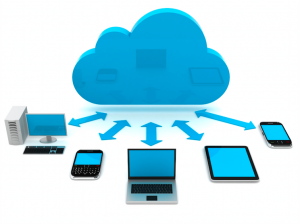There are a lot of benefits when using a cloud storage one of them is that the user doesn’t need to buy any hardware just simply access the provider servers. The provider job is to maintain and manage those servers with that being said users can greatly reduce or even eliminate the cost of the storage.
What is Cloud Disaster Recovery?

Recovery as a Service
The term recovery as a service is a part of cloud computing with some others like Software as a service or infrastructure as a service. Recovery as a service, also known as Disaster recovery as a service, belongs to the category of cloud computing that is used for protection of an application or data from some human or natural disruption or disaster at some location. It is used to enable a full scaled recovery in the cloud. Recovery as a service is different from other cloud backup services because it is protecting data and the same time providing standby computing capacity to alleviate even faster application recovery. The recovery as a service capacity is handed in a cloud-based computing model and because of that recovery resources are paid only when they are used, making it more efficient and affordable than any other regular disaster recovery warm site where recovery resources are running always.
With cloud having disaster recovery services, companies and organizations have now the option to replace their primary or secondary data centres. Also, they can benefit from cloud flexibility and automation while having a good disaster recovery assurance.
How do design a DRP?
Disasters can happen at any time and they can interrupt servers. Your applications, later on, might have some bug and because of that, you need to have a disaster recovery plan ready at all times. When you are starting to design your own disaster recovery plan it is important to use strategies that will work specifically with your case. You also need to make sure that your disaster recovery plan enables the full recovery process such as clean-ups, restores, and backups. It is important that once you have designed your disaster recovery plan to run tests on it regularly. Sometimes it is smart to have more than one restore plan because if one fails you will have the other ready immediately. You can also implement some control measures that will prevent disaster events from happening or they can detect an issue before the disaster strikes.

